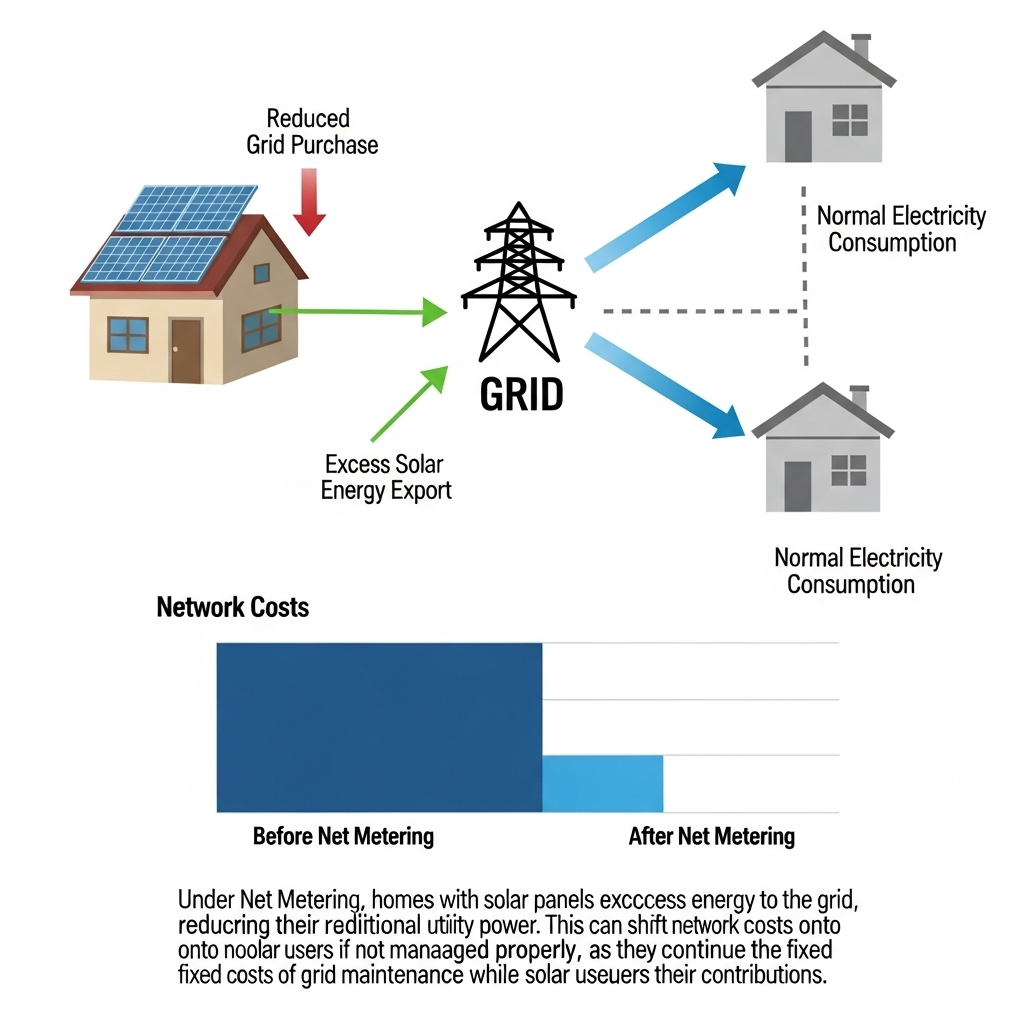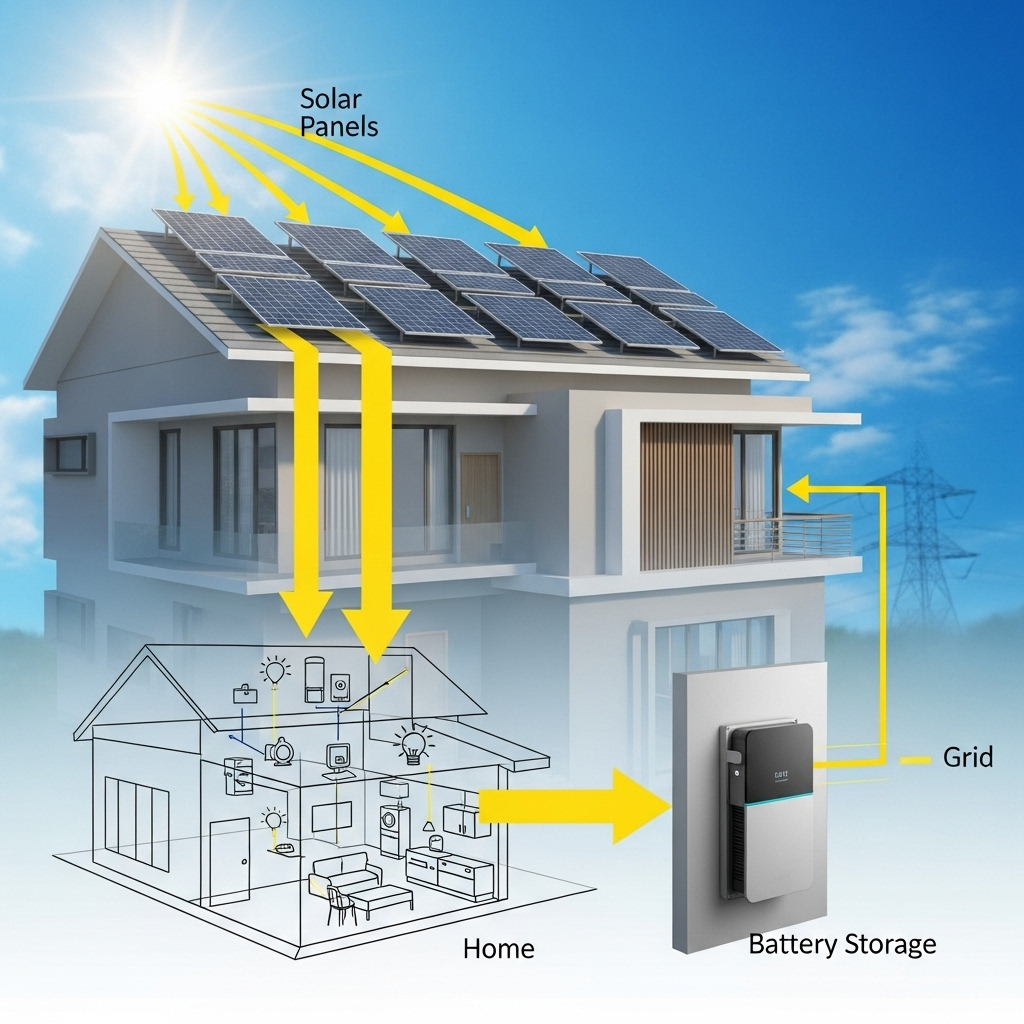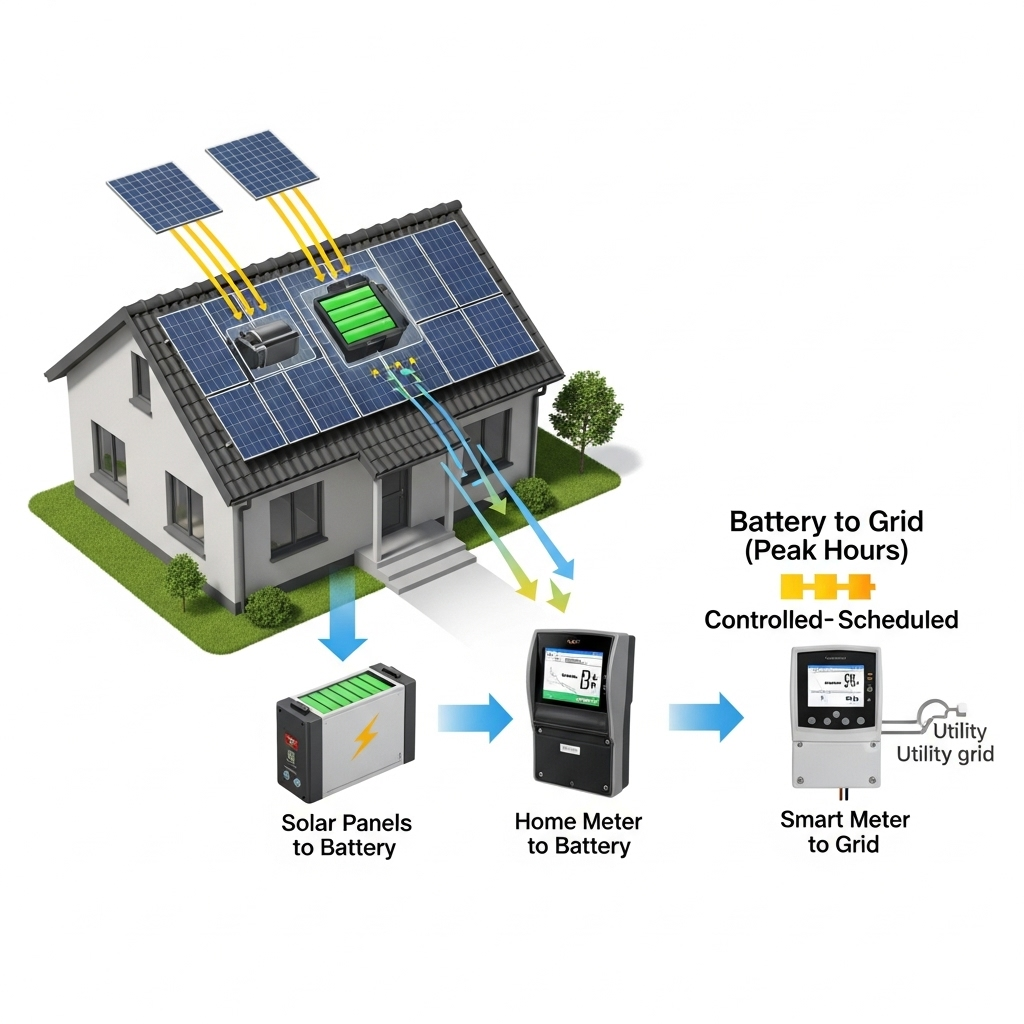Net metering has been a powerful driver for residential solar adoption. It offers a simple, attractive financial incentive for homeowners to invest in solar panels. The concept is straightforward: you receive credits for the excess electricity your system sends to the grid. But as more solar comes online, a critical question arises: is this model fair to everyone, including utilities and your neighbors who do not have solar? This discussion examines the complexities of net metering, the debate over network cost recovery, and the new compensation models shaping the future of solar energy.
Understanding Net Metering and Its Original Purpose
To appreciate the current debate, it's important to first grasp how net metering works and why it was created. The policy was designed with a specific goal in mind: to make solar energy more accessible and financially viable for the average person.
What is Net Metering?
Think of net metering as a billing arrangement. When your solar panels produce more electricity than your home is using, that surplus power flows into the utility grid. The utility credits you for this energy, typically at the full retail electricity rate. At the end of the billing period, these credits offset the cost of any electricity you drew from the grid when your panels were not producing, like at night. In effect, the grid acts as a storage solution for your excess solar energy.
The Goal: Encouraging Solar Adoption
The primary objective of net metering was to kick-start local solar markets. By offering a one-to-one credit, the policy simplified the financial calculations for potential solar owners and shortened the payback period for their investment. According to a report from the International Energy Agency, Technology Roadmap - Solar Photovoltaic Energy 2010, this approach proved effective for stimulating growth in distributed solar generation. Its simplicity made it easy for both consumers and administrators to manage, leading to widespread adoption in many regions.
The Core of the Debate: Network Costs
Despite its success, the growth of solar has exposed a fundamental challenge within the net metering framework. The debate centers on how the costs of maintaining the electrical grid are distributed among all customers.
Who Pays for the Grid?
Your monthly electricity bill is more than just the cost of the power you use. It bundles several components: the cost of generating the electricity, the cost of transmitting it over long distances, and the cost of distributing it to your home. These transmission and distribution (T&D) fees, or network costs, pay for the poles, wires, and substations that make up the grid. These are largely fixed costs, meaning the utility must pay them regardless of how much electricity is consumed.
The 'Cost Shift' Argument
Here lies the main criticism of net metering. When solar owners use credits to reduce their electricity bills to zero, they may also be avoiding their contribution to these fixed network costs. However, they still rely on the grid for backup power and to export their excess energy. Critics argue that this shifts the financial burden of maintaining the grid onto other customers, particularly non-solar households who may include renters and low-income families. A study by the IEA, China Power System Transformation, highlights that in areas with high volumetric rates, net metering allows distributed energy resource (DER) owners to disproportionately offset their share of network costs.
Is the Compensation Rate Accurate?
Another point of contention is the compensation rate itself. Net metering values exported solar power at the full retail price. Utilities contend that this is an overpayment, as the retail price includes network costs and other fees. They argue they could acquire wholesale energy from other sources at a much lower price. The value of the exported electricity, from the utility's perspective, is closer to this 'avoided cost' of generation, not the full retail rate a customer pays.
The Role of Energy Storage in the Equation
As the rules around solar compensation evolve, energy storage is emerging as a powerful tool for homeowners. A battery system fundamentally changes how you interact with the grid and can insulate you from unfavorable policy changes.
Self-Consumption: The Game Changer
Instead of exporting all your excess solar energy to the grid, you can use it to charge a home battery. This stored energy can then be used to power your home in the evening or during periods of low solar production. This process, known as self-consumption, reduces your reliance on the grid and minimizes the amount of energy you export. If export compensation rates become less favorable, maximizing self-consumption becomes the smartest financial strategy.
Maximizing Your Solar Investment with Batteries
A complete home energy storage system, which integrates high-performance lithium batteries like LiFePO4 with a hybrid inverter, offers more than just financial benefits. It provides energy independence and resilience. You can keep your lights on during a power outage and strategically use your stored energy to avoid expensive peak electricity rates. To make an informed decision, it's vital to understand the technical aspects of batteries. A comprehensive reference on solar storage performance can explain key metrics like Depth of Discharge (DoD) and cycle life, helping you choose a system that aligns with your long-term energy goals.
Evolving Compensation Models
In response to the challenges of net metering, regulators and utilities are exploring alternative compensation structures that aim to be more equitable and reflective of the true value of solar energy.
The Shift to Net Billing
Net billing is a successor to net metering. Under this model, the electricity you consume from the grid is still billed at the retail rate. However, the excess energy you export is credited at a different, lower rate. This export credit is often based on the utility's avoided cost—the amount it would have paid for wholesale power. This structure separates the value of consumed electricity from the value of exported electricity.
Value of Solar (VoS) Tariffs
A more sophisticated approach is the Value of Solar (VoS) tariff. Instead of a simple avoided-cost rate, VoS calculates a credit based on a comprehensive assessment of the value that distributed solar provides to the grid. This can include benefits like avoided generation costs, reduced need for T&D infrastructure upgrades, and environmental value. As noted in the IEA's System Integration of Renewables analysis, some jurisdictions are pioneering these value-based methods. For instance, Minnesota adopted a VoS tariff that provides a long-term, inflation-indexed rate determined through a detailed benefit-cost analysis.
Comparing Compensation Structures
The transition from net metering to newer models involves clear trade-offs between simplicity and accuracy.
| Feature | Net Metering | Net Billing | Value of Solar (VoS) |
|---|---|---|---|
| Export Credit Rate | Full Retail Rate | Avoided Cost / Wholesale Rate | Calculated Value (Energy, Grid, Environment) |
| Simplicity for Customer | High | Moderate | Low to Moderate |
| Grid Cost Recovery | Low | Moderate | High |
| Fairness Perception | Debated | Seen as more equitable | Aims for maximum fairness |
Final Thoughts on Fair Energy Compensation
The conversation around the fairness of net metering is a sign of a maturing solar industry. While the original policy was instrumental in launching the residential solar movement, its limitations become more apparent as solar penetration grows. The industry is now moving toward more nuanced compensation models like net billing and Value of Solar tariffs that attempt to balance incentives for solar owners with the need for equitable grid cost recovery. For homeowners, this shift underscores the growing importance of energy storage. By pairing solar panels with a battery, you can maximize self-consumption, secure your energy supply, and adapt to the evolving landscape of energy policy, putting you in control of your power.
Frequently Asked Questions
What is the main difference between net metering and net billing?
The key difference is the credit rate for exported energy. With net metering, you are typically credited at the full retail electricity rate you pay. With net billing, the credit for exported energy is set at a different, often lower, rate, such as the wholesale or 'avoided cost' price of electricity.
Why are utilities concerned about net metering?
Utilities' main concerns are twofold. First, they argue that net metering allows solar users to avoid paying their fair share for maintaining the electrical grid, shifting those costs to non-solar customers. Second, they contend that crediting exported solar at the full retail rate overcompensates solar owners, as this rate is higher than the wholesale cost of energy.
Does adding a battery to my solar system help if my state moves away from net metering?
Absolutely. If your state adopts a less favorable export compensation rate, like in net billing, a battery becomes extremely valuable. It allows you to store your excess solar energy for your own use later, rather than exporting it for a low credit. This increases your self-consumption and energy independence, making you less dependent on grid pricing and policy changes.
Are net metering credits taxable?
In most cases, net metering credits that appear on your utility bill are not considered taxable income by the IRS, as they are treated as a reduction of your personal electricity expense. However, policies can vary by state and depend on the specific program. If you receive a direct payment from the utility for excess generation, the tax implications could be different. Disclaimer: This is not financial or legal advice. Please consult with a qualified tax professional for guidance specific to your situation.





Leave a comment
All comments are moderated before being published.
This site is protected by hCaptcha and the hCaptcha Privacy Policy and Terms of Service apply.